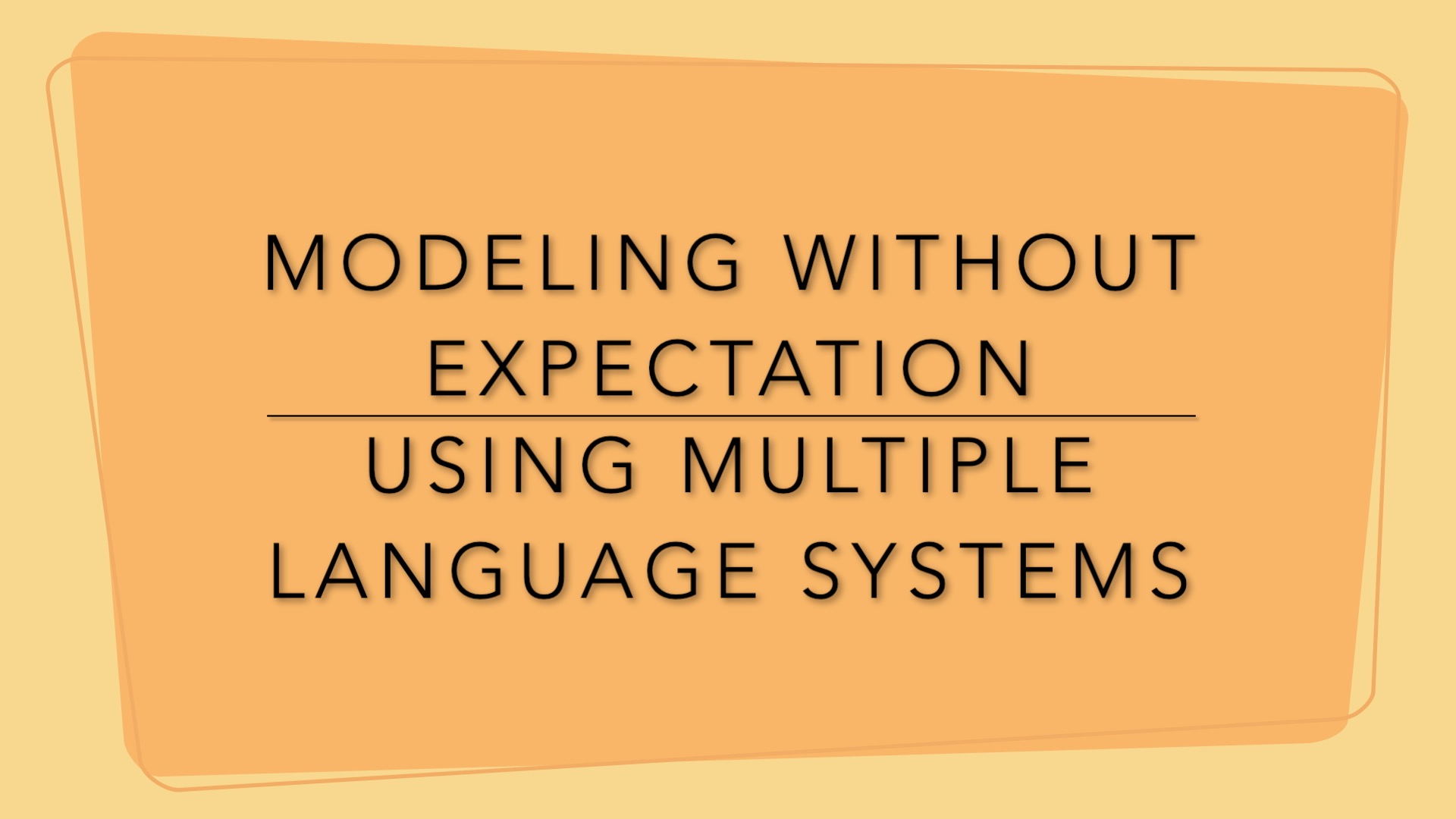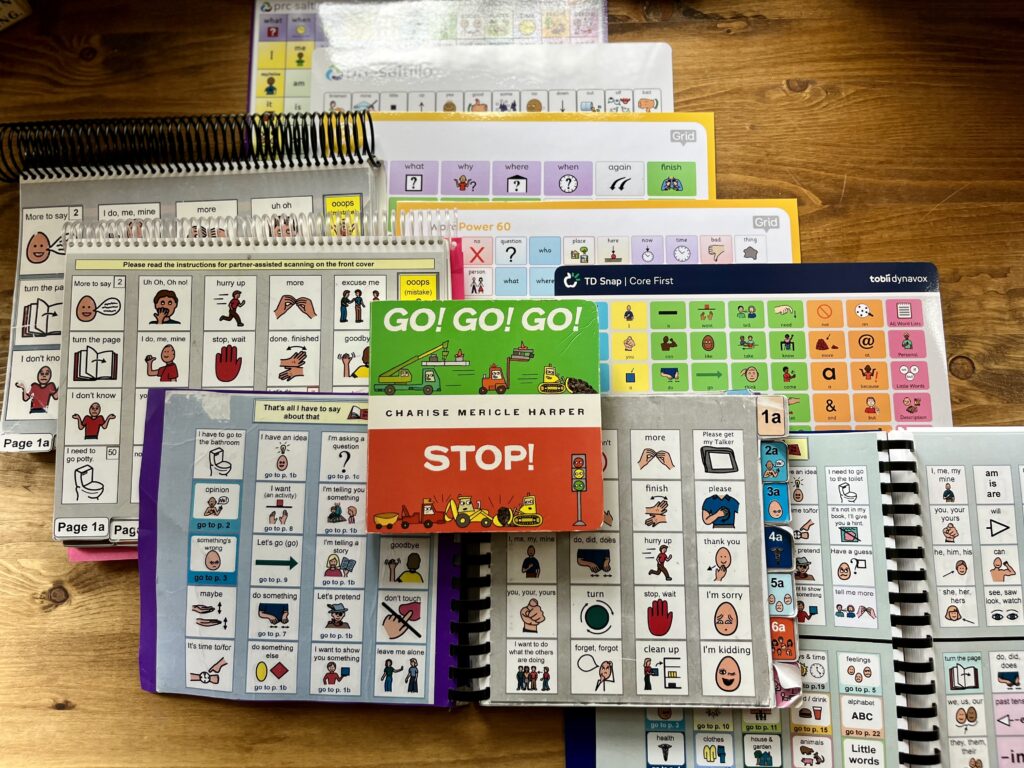The Next The AAC Experience Parent Circle Begins January 15, 2026 - SIGN UP HERE

Empowering Communication: Literacy and AAC
I wanted to recognize the importance of literacy and the part it plays shaping the lives of individuals who use Augmentative and Alternative (AAC) around the world. Literacy extends beyond reading and writing; it’s about communication, expression, and empowerment. For individuals with communication challenges, AAC plays a pivotal role in unlocking their voice and ensuring they have access to literacy.
The Power of AAC:
AAC refers to a range of methods and tools designed to support individuals who have difficulty with verbal communication. This can include people with conditions such as autism, cerebral palsy, Rett syndrome, or speech disorders. AAC encompasses various forms, from low-tech options like communication boards and picture cards to high-tech solutions like speech-generating devices (SGDs) and mobile apps. AAC breaks down communication barriers for individuals with diverse needs and allows them to express their thoughts, feelings, and ideas effectively. It promotes literacy by offering accessible ways to engage with written and spoken language, fostering the development of reading and writing skills. Even without a spoken voice, literacy skills open up the world to everyone.

Reading to build Literacy Skills:
Reading has such a huge impact on literacy development. Reading to children, whether they use AAC or not, is a powerful way to enhance their language and literacy skills. Here are the key benefits:
- Vocabulary Expansion: Reading exposes children to new words and concepts, expanding their vocabulary, which is crucial for effective communication.
- Modeling Language: When adults read aloud, they model proper pronunciation, intonation, and fluency. This helps children with AAC devices learn how to use them effectively.
- Comprehension Skills: Reading stories together allows children to develop their comprehension skills, understanding narrative structure, and sequencing of events.
- Encourages a Love for Reading: Regular reading sessions can instill a lifelong love for books and storytelling, which can greatly benefit a child’s literacy journey.
In my own journey, I’ve witnessed the incredible power of reading in shaping one’s literacy and love for books. Growing up, my grandparents owned a newsstand, which meant that every holiday, birthday, and visit to their house came with the joy of receiving a new book. The excitement for each new addition to my collection never waned, regardless of how full my shelves got.
I cherished the tangible aspects of books—their unique smells, vibrant pictures, and the promise of a new adventure held within their pages. What made the experience even more special was when someone would take the time to read to me. Those moments were pure magic, and they instilled in me a deep appreciation for storytelling and the written word.
As I grew older, picture books transitioned into chapter books, and I became that child who wouldn’t dare bend the spine or fold a page because books were treasures to me. I eagerly awaited events like the Book Fair each year, and every opportunity to place a book order felt like Christmas had come early. It was no surprise that my first job was at a library, and to this day, I still get excited about a trip to the library.
During my years as a teacher, I found a way to weave literacy into all the subjects that I taught or co-taught. Whether it was science, math, or history, I realized that literacy was the thread that connected all learning. It wasn’t just about reading stories; it was about interpreting data, understanding concepts, and communicating ideas effectively. This holistic approach to literacy enriched my students’ understanding and their ability to articulate their thoughts across different subjects.
When I became a parent, I seamlessly integrated the celebration of milestones with books and started reading to my children even before they were born. Reading became an integral part of our daily routines, making it a habit that would lay the foundation for their literacy skills. When life took an unexpected turn for us, and we learned that our daughter would most likely never speak, the importance of merging AAC with reading became even clearer. It wasn’t just about fostering literacy skills; it was about giving our daughter a voice, a way to express herself, and the ability to engage fully in the world of stories and ideas.
What’s been remarkable about incorporating AAC into this tradition is the wealth of opportunities it has provided for communication and language modeling. When reading with AAC, we have been able to have discussions about the story, characters, and emotions, and model language that doesn’t always come up on a daily basis. This has hugely increased our daughter’s vocabulary development and comprehension in a safe no-pressure setting. It’s been an amazing tool to enhance our reading experience!
Building AAC Skills alongside Literacy: Tips for Everyone
Not everyone may have a personal history filled with books and reading, but creating a habit of reading and language modeling is a journey that anyone can embark on. Here are some practical tips to get you started:
- Start Early with AAC and Literacy: Begin using AAC for communication with your children or students from a young age, as you would use spoken language. Reading during a bedtime routine is a great way to build the habit. The earlier you introduce them to AAC as a means of expression and immerse them in the world of books and language, the more comfortable and natural both AAC and literacy become for them, and yourself. This approach seamlessly blends AAC with early literacy development, laying a strong foundation for effective communication and lifelong literacy skills.
- Choose Appropriate AAC Tools and Books: Select AAC tools that match the communication abilities and interests of your child or students, much like choosing appropriate books that align with their age and interests. Just as engaging books hold their attention and make the reading experience enjoyable, ensure that the AAC options you select are engaging and appealing, making the communication experience enjoyable and effective. This thoughtful selection of both AAC tools and books enhances their overall communication and literacy journey.
- Establish a Routine for AAC Communication and Reading: Whether it’s during mealtimes, before bedtime, or as part of a daily schedule, creating a consistent routine for both AAC communication and reading is essential. This routine helps individuals, whether children or adults, associate AAC and reading with effective and enjoyable communication, language development, and a pleasant, comforting experience
- Explore Resources at the Library and AAC Tools: Take full advantage of libraries as treasure troves of books for all ages, while also incorporating visits to explore AAC resources. Alongside your library visits, explore AAC resources like apps, communication boards, and speech-generating devices. These resources provide a wide range of communication options and support the discovery of new ways to express oneself through both AAC and reading, enhancing the overall communication and literacy experience.
- Explore Diverse AAC Methods and Literary Genres: Just as you shouldn’t limit yourself to one type of book genre, don’t restrict your exploration to a single AAC method. Embrace diversity by exploring various AAC approaches, such as picture-based systems, symbol-based systems, or text-to-speech technology. In addition, diversify your reading material by exploring different book genres like fiction, non-fiction, fantasy, and more. This approach stimulates curiosity and enriches language skills, enhancing both communication and literacy experiences.
- Encourage Open-Ended Questions for Communication and Reading: Whether using AAC or engaging in reading sessions, encourage discussions by asking open-ended questions about thoughts, feelings, experiences, story elements, characters, and illustrations. This approach invites conversation, fosters critical thinking, and promotes expressive language development, enriching both communication and reading experiences.
- Model Language Effectively Without Expectation: Whether reading to a child with AAC needs or someone learning a new language, actively model language by using AAC to describe pictures, emotions, actions, and the content of the story. This practice not only enhances comprehension but also simultaneously expands vocabulary and language modeling skills, fostering effective communication and literacy development while placing less demands on the user.
- Adapt to Individual Needs in Communication and Reading: Acknowledge that every child, student, or individual is unique with distinct communication abilities, reading preferences, and accessibility needs. Adapt both your AAC and reading approach to accommodate their interests, communication style, and individual requirements. This approach ensures that both AAC communication and reading become positive and personalized experiences tailored to their specific needs and enhances their overall communication and literacy journey.
- Practice Patience and Persistence in Communication, Reading, and AAC: Whether you’re building a reading habit or nurturing skills in AAC and literacy, remember that progress takes time and consistency. Even if it doesn’t seem like your efforts are paying off immediately, stay patient and persistent, knowing that every session, whether for communication or reading, contributes significantly to language and literacy development.
- Celebrate Communication, Literacy, and Reading Milestones: Just as you would celebrate other milestones in life, acknowledge and celebrate accomplishments in both communication through AAC and literacy through reading. Whether it’s effectively conveying a message, using new vocabulary, completing a book, learning a new word, or initiating communication, take the time to reward and reinforce progress in both domains, fostering a positive and motivating environment for growth.
- Engage in Supportive Programs: Many communities offer programs and events related to both reading and AAC communication, literacy, and support for individuals and their families. By participating in these programs, you can gain added motivation, guidance, and a strong sense of community around effective communication, literacy, reading, and AAC use, creating a supportive and enriching environment for growth.
The journey of literacy is a lifelong adventure, one that begins with the simple act of opening a book and sharing its wonders. Whether you have personal memories like mine, filled with the excitement of books, or are just starting this journey with your own children or students, know that reading is a gift that keeps on giving, and AAC is a key to unlocking its full potential for everyone.
By following these tips, you can create a reading and language modeling habit that benefits not only children with AAC needs but also individuals of all ages and backgrounds. Remember, it’s never too late to start fostering a love for reading and language, and every effort brings us one step closer to a world where everyone has access to the joys of communication and literacy. Together, we can ensure that everyone has a voice and the opportunity to write their own story, with the added joy of nurturing literacy skills through the shared love of reading.
